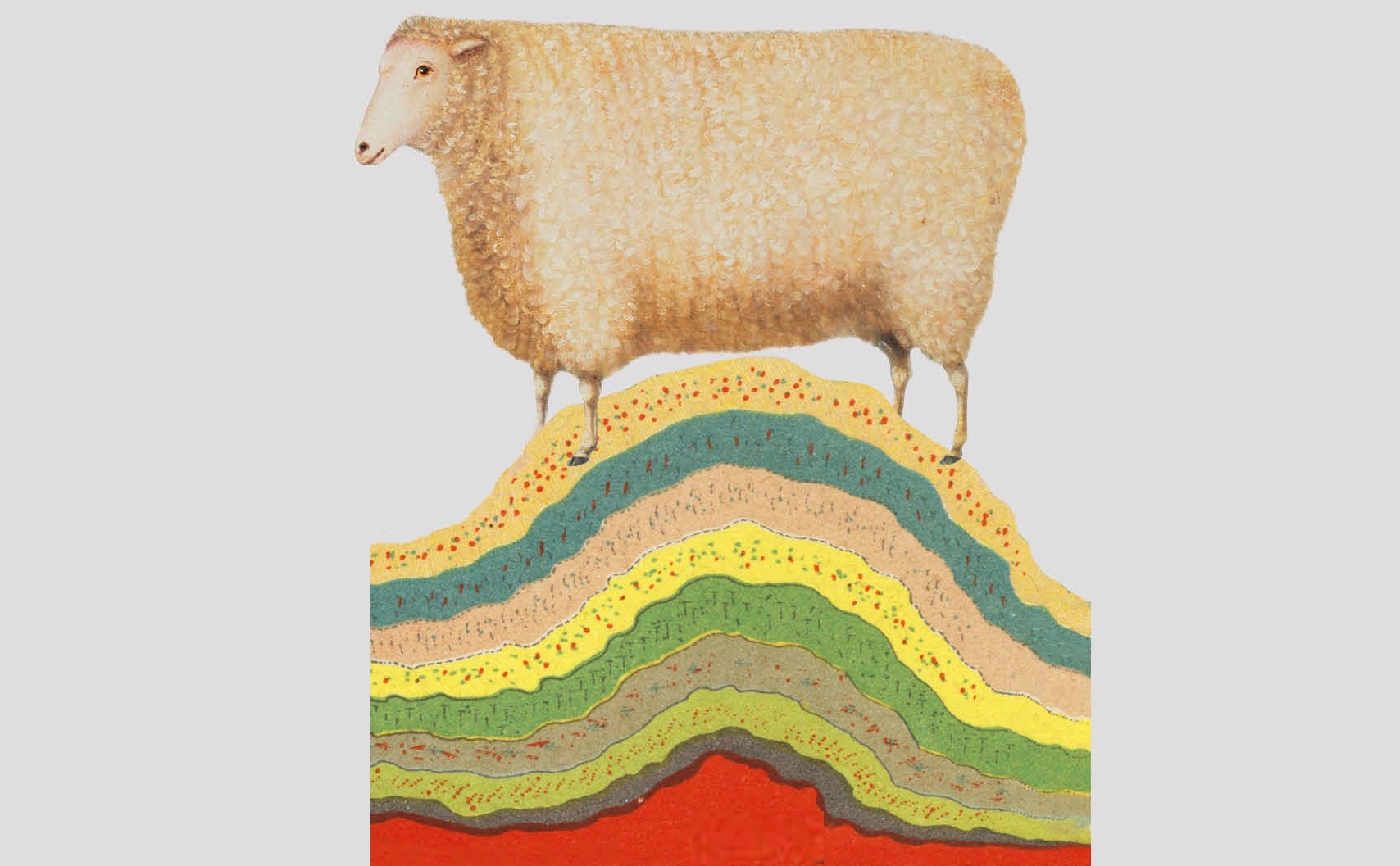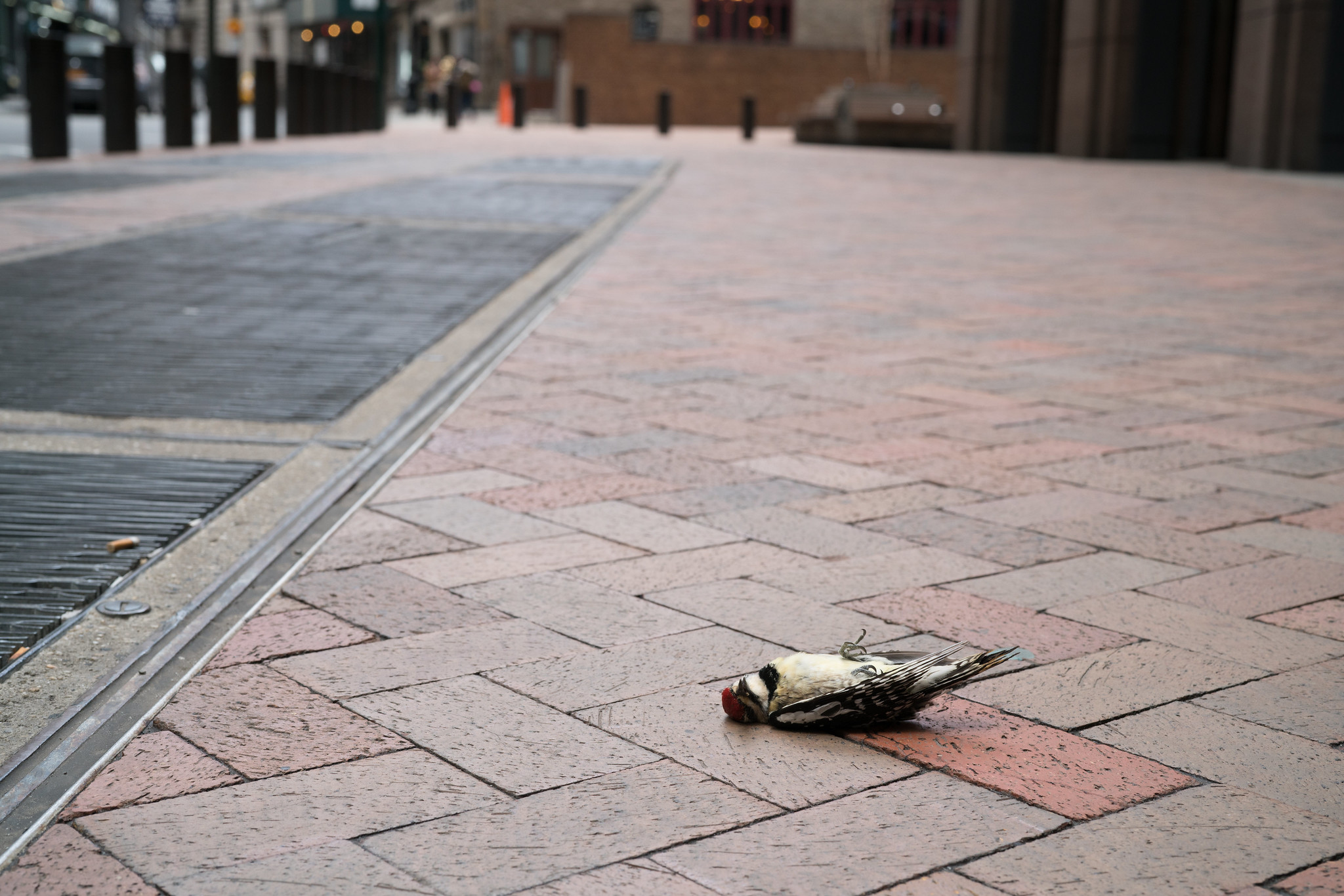Interviews
Jen Beagin Counters the BS of Who You’re Supposed to Be in Your 20s
The author of “Vacuum in the Dark” on cleaning up poop (literally) and finding writing inspiration from donkeys chewing

When I read Jen Beagin’s first novel, Pretend I’m Dead, I was coming to the realization that my twenties were not shaping up into anything pretty: grad-school dropout turned publishing-hopeful only to skid hard and fast into “freelance writer” which is to say, a part-time babysitter. I was not, I was afraid, very “impressive.” But I enjoyed babysitting. The kids were weird storytellers who liked to read and had strange questions I didn’t know the answers to. I was ashamed of being content with where I was, because it wasn’t where I was supposed to be in my career at 27 years old.
Then, Jen Beagin with her two novels, Pretend I’m Dead, and now Vacuum in the Dark entered my life, one at a time. These are two novels that speak truth to the bullshit about where you’re supposed to be in your twenties, what you’re supposed to be in your twenties, and who you are actually becoming. Becoming a person is a little gross, a little disappointing, mostly weird, and sometimes beautiful. Pay attention to all of it.
Pretend I’m Dead is a novel about a young woman named Mona who is a full-time house cleaner and sometimes volunteer at a needle exchange. Mona meets Mr. Disgusting at the needle exchange and falls in love. When he tells Mona to leave Massachusetts and venture to New Mexico, Mona listens. She remains a cleaning lady who likes to take portraits of herself doing weird things in other people’s houses, and talking to her inner voice, Terry Gross. She collects characters like her neighbors Yoko and Yoko, and her friend named Jesus.
Now, Vacuum in the Dark is the sequel. And thank god we get more time with Mona the Irreverent, my newly canonized patron saint. Mona is still in her twenties, living in New Mexico, acquiring clients like Rose, who is blind and has a vindictive ex-cleaning lady trolling her house, or the Hungarian artists with glass tables filled with gold leaf, and a child named Rain. She gets her heartbroken again, and it’s shitty, but Mona’s used to cleaning shit up.
Jen Beagin and I talked over email about the gross stuff, how to write a novel before the assholes wake up, donkeys, and the difference between art and a job.
Erin Bartnett: Can we start at the very beginning? Vacuum in the Dark opens with the sentence, “It was hard, misshapen, probably handmade.” “It” is a poop. The first section is even titled “Poop.” Maybe I’m saying a little too much about myself here, but I was downright gleeful about it. I think that’s part of what I love about your writing more generally and about Mona more specifically as a character: Mona is a little disgusting, or rather the world is a little disgusting and Mona isn’t afraid to handle the gross stuff. It’s her “job,” even. Can you talk about how the gross stuff functions in your writing?
Jen Beagin: I think it lends authenticity to Mona’s character. You see a lot of gross stuff as a cleaning lady, especially if you clean behind the furniture like I did. I’m talking stains. Poop, blood, come, spaghetti sauce. Upsetting red wine stains on white furniture. But I’ve always had a high tolerance for this sort of thing. I’m only truly grossed out by maggots. Luckily, I only had to deal with maggots once, when I was working for someone else and was sent to clean the house of a hoarder. This was long before hoarders were on TV. It took me something like 21 hours to clean the kitchen, which was teeming with maggots, and I was making nine dollars an hour, maybe less. I’m still upset about it all these years later. But poop? Everyone poops, as a wise person once said, and what better way to draw a reader in. It’s how I’d want a novel about a cleaning lady to start.
Everyone poops, as a wise person once said, and what better way to draw a reader in.
EB: Both Pretend I’m Dead and Vacuum in the Dark are organized into four sections or chapters. Could you talk about why you decided to structure the novel that way? What about it was helpful or productive for you?
JB: Well, no one really teaches you how to write a novel. At least, not in my experience. I’m not sure it can be taught, because there are no hard and fast rules. Also, writing a novel is hellish and takes forever, so it would be like teaching someone how to torture themselves — slowly, over several years. What you’re taught instead is how to write stories. That’s how Pretend I’m Dead started, as four stories that I spent a lot of time lengthening and linking together, and I wrote Vacuum in the Dark in the same fashion, because I wanted the two books to have a similar structure, and, honestly, because it made the process more approachable and slightly less agonizing, and I was just trying to make it out alive.
EB: Mona is a visual artist first, and I know you’ve mentioned that you have to be careful about what you’re reading while you’re writing, but I wondered if the same goes for visual art, music, film. Were there any particular pieces of art that you drew inspiration from while writing Vacuum in the Dark?
JB: Nothing immediately comes to mind, but have you ever heard a donkey chew? There were two miniature donkeys in my backyard during the writing of Vacuum in the Dark. They belonged to the owner of the house I live in, and I spent a lot of time caring for them. They weighted a little over two hundred pounds and came up to my waist. Honestly, I didn’t find them all that compelling initially, but eventually, over the course of several weeks, they seduced me with their chewing. They chew constantly, at least while they’re awake, and it’s calm, slow, and thoughtful. It’s how they process information and emotion. I found it incredibly comforting to listen to, and could often hear it from my bedroom. It was like having a running creek outside my window, or some weird water feature, because if I really tuned into the sound, all my stress melted away. When I stepped outside, they trotted up to me, leaned against my legs, and chewed. If my legs were bare, they’d sniff me with their incredibly soft and sensitive nostrils. It was like they were inhaling me. It was the same way they drank water. It elevated everything. It made me feel beautiful, cherished, and adored, which is exactly how you want to feel when you’re writing a hopefully not-too-lame sequel to your first book.
I write best under high ceilings, as it turns out, and when I go to bed alone, wake up alone, and don’t speak before noon.
EB: What was different about writing the second novel? What did you learn about novel writing in between these two books? Did you learn anything new about Mona in between these two books?
JB: I wouldn’t say I learned anything new about Mona between these two books. I know her pretty well already, or about as well as I know myself, and we don’t keep any secrets. But, whereas Mona has only aged two years between books, I’ve aged an entire decade, and let me tell you, it’s been a long ten years. I still have no idea how to write a novel, but I’ve learned what works for me in terms of a routine, which is early to bed, early to rise, and laying off the booze as much as possible. A little wine is fine. I also write best under high ceilings, as it turns out, and when I go to bed alone, wake up alone, and don’t speak before noon. Part of the reason for this is that I write in bed. A lot of writers with children get their work done while the kids are asleep or out of the house. I don’t have kids, but I do have a couple of inner critics, one of whom is a nun named Sister Marie Paula. My inner critics start bullying me at around 11 a.m. So, I’ve learned to write very early in the mornings, before the little assholes wake up.
EB: Mona cleans other people’s home for a living, which gives her a pretty unique perspective on several iterations of what “home” can look like. Home can be the darkest and dirtiest place. Her neighbors Yoko and Yoko, also keep insisting that The Odyssey is a pretty useful text for helping Mona understand her journey from Taos to L.A. to Bakersfield. And then there’s the fact that she also grew up between her parents’, her grandparents’, and her adopted caretaker Shelia’s homes. So there are a lot of working definitions of “home” in Vacuum in the Dark. Can you talk more about what “home” meant to you while writing this novel?
JB: Home is wherever my bed is. For the past couple of years my bed has been in the very large living room of a 280-year-old Dutch farmhouse in Hudson, NY, which is where I wrote most of Vacuum. Other than my bed, there’s very little furniture in the room, just a chair, a small bookcase and dresser, none of which is mine. I used to think home was about having all my stuff around me. My favorite table and paintings and so on. But my stuff has been in storage for years now and I don’t miss it. Anyway, the house is weird and beautiful, but it’s also completely uninsulated, which is why I’m spending the winter in Mexico. I’m without my bed, so I don’t feel quite at home. I also had to remove the art on the walls of the room I’m writing in, which helped some. I would take the furniture out of here, too, but it’s not my house and I don’t want to seem like a nutbag.
EB: Earlier in the novel, Terry offers this insight on Mona’s photography and life: “As part of your overall thesis, I happen to think you’re saying something interesting about repetition. And monotony. And perhaps loneliness? Not to mention the tension between the working class and the wealthy. What I also find interesting, Mona, is that you keep repeating your pattern of drifting from house to house, forming intimate and sometimes inappropriate relationships with your clients, and I’m beginning to suspect the photographs are linked to this impulse. They’re a bridge, a conduit–”
Mona lives alone, cleans houses alone, identifies as a “lone wolf.” Loneliness induces do a lot of action, some good, some bad. Can you talk about what loneliness means to Mona?
JB: Mona’s lonely, no question, but she’s very comfortable with her loneliness. I would say she’s a little too comfortable with it. Taking pictures of herself dressed as her clients is an oblique way to feel less alone, as is talking to Terry Gross in her head. But it would never occur to Mona to join a book club or a knitting circle or a church. In some ways, that’s what the books are about. Different ways to deal with loneliness.
My books are about different ways to deal with loneliness.
EB: There was a period of time when I was babysitting and reading a lot and paying my bills but failing at doing much of anything else. I dreaded meeting new people who would ask me “what I do.” I remember one woman, after letting me stumble over the question for a couple minutes, patted my hand and said something like, “Ah, you’re living now. That’s okay. You’ll write once you’ve lived some.” I wanted to kiss her hands and call her Nana I was so grateful.
Mona cleans houses for a living, “but also” has ongoing artistic projects. She photographs herself with people’s things in their homes, works on some painting, maybe writing. But it’s not like she’s trying to build some romantic idea of herself as a working artist or anything. She openly admits to having imposter syndrome about being an “artist,” and feeling a great deal of pleasure after cleaning out a microwave with a hot sponge and lemon juice. This is all to say, I really identified with her dread about the question, “what else do you do, besides this?” What are your feelings about the anxiety to make art your JOB, or just the general cultural attitude about what your job “says about you?”
JB: Well, I’ve always identified more with steerage than first class, which is probably why I’ve worked in the service industry for so long. Steerage is where all the interesting shit happens. First class gets boring after five minutes. Mona knows this. So, it’s not that she’s ashamed of being a cleaning lady. What’s embarrassing for her is telling people about her creative pursuits, and I’d say the same is true for me. When I was a waitress and someone asked me what I did for a living, I would never say, “Well, I’m waiting tables, but really I’m an aspiring writer.” No, no. I’m a waitress. I’m a cleaning lady. I’m a data entry clerk. I sling pizzas. I make coffee. I answer phones. Et cetera. Anyway, I don’t feel anxiety about making art my job…yet. For starters, I don’t think of it as art. I treat it like any other job. I show up, put in as many hours as I can, try to keep myself entertained, and if someone asks me what I do, I mumble that I’m a writer and then change the subject as quickly as possible.
EB: In an interview with Chronogram back in 2017, you mentioned that you were working on your second novel (which I’m assuming is this one?), and you said that this novel was darker. “I’m not afraid to be dark now,” you’re quoted as saying in the interview. “It took a long time.” I really identified with the fear of being dark. Can you talk more about the relationship between the dark stuff and writing? How did you tap into it? And what about time helped you get there?
JB: I think what I was referring to was that I’ve released the victimhood thing. That’s what took a lot of time. Now I can write about the dark stuff more directly, because I don’t think of myself as a victim anymore. But I’ve never struggled with tapping into it. I’m 47. The well has been tapped for many years now. I have easy access to these things. It was really more a question of how much darkness I was willing to subject the reader to. The answer is…a lot, apparently. But hopefully there’s enough lightness to keep the reader from drowning, or putting the book down.
EB: Okay this is a three-prong question. First, Terry Gross is more than Mona’s conscience, in that she’s actually nice to Mona, even when Mona is being cruel to herself. I was totally fascinated by Mona’s relationship with Terry. So, Terry Gross part 1: Can you talk more about how Terry Gross came to be in the novel?
JB: She showed up on the first page. It felt like a gift, actually, because it allowed me to write even more dialogue, which is all I really want to do, and it gave Mona someone to talk to, someone who thinks she’s fascinating and who wants nothing from her. I used to listen to Fresh Air when I cleaned houses many years ago, and sometimes Terry would interview me after the show. In my head, I mean. It was usually about something I was angry or felt guilty about. “Why aren’t you cleaning the blinds?” she’d ask innocently. It gave me a platform to vent. “I don’t do blinds, Terry, okay? It’s too time-consuming. These people should buy new blinds! Do they really expect me to clean each slat? What the fuck!” So, when Mona starts talking to Terry on page one, it felt pretty natural and familiar.
EB: Terry Gross, part 2: Does Terry Gross know how prominently she figures in your novels? Was there any weird pushback or did you have to get permission to use her name?
JB: Apparently, you’re allowed to use the names of famous people in fiction, so long as you’re not having them commit murder or something. So, no permission was needed, as far as I know. I’m not sure if Terry is aware of this book or her very important role in it. I imagine my publisher tried to get a copy to her. I only hope she isn’t horrified!
EB: Terry Gross part 3: Do you have a Terry Gross?
JB: Unfortunately, I do not. I could use one.
EB: Worst piece of writing advice you’ve ever received? Best piece of writing advice you’ve ever received?
JB: I withhold judgment on advice.









